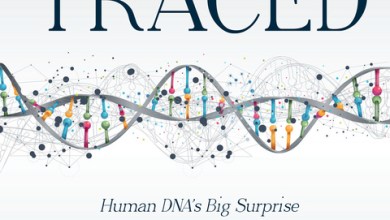If the World Only Knew
Noel Derose
CESHE, 2008
352 pages
This book is an overview by Noel Derose of the works of Fernand Crombette (1880-1970), a French Catholic intellectual, who wrote extensively on ancient history. His primary claim to fame was deciphering hieroglyphics using the Egyptian Coptic language. Using this method, he claimed to be able to reconcile the histories of Egypt with that of Genesis in the Bible.
His works include those on geography, especially the breakup of the continents from a single land mass. He created an atlas to illustrate the detailed movement of the continents. He wrote an entire volume on Easter Island and another on Atlantis. According to Crombette, Atlantis sank at the same time as the Israelite crossing of the Red Sea, which also coincided with the voyage of Jason and the Argonauts and the drying up of the Scythian Ocean.
He wrote a great deal on the history of Egypt, and also on Crete, the Hittites, the Assyrians and the Babylonians. His work on history led him to question the long ages of evolutionary theory. His work on astronomy led him to a geocentric-type structure of the cosmos. He wrote his own translation of the first 11 chapters of Genesis using his Coptic method. He also wrote a history of France.
Crombette knew that Egyptian chronology had been developed by reading hieroglyphics, and had been used to question the chronology of the Bible - Genesis in particular. So he made his own study of Egyptian hieroglyphics and decided that the method developed by Champollion was deficient.
He was well-versed in a number of languages and thought that the Egyptian hieroglyphics might be better read using the ancient Egyptian Coptic language. To his surprise, his method revealed startling similarities between the Egyptian hieroglyphic writings and the Bible. He was also able to decipher the hieroglyphics of Crete using his method.
Crombette next turned to reading the Bible in the original Hebrew while using his method to interpret the meaning. He translated the first eleven chapters of Genesis in this fashion and came to the conclusion that the earth was taken from the sun, and the moon was taken from the earth. This seems to be in contradiction to the accepted reading of Genesis, however.
Crombette makes some fascinating claims and seems to be able to lay out evidence to support them. Unfortunately, most of his work was done in isolation and he did not get much feedback on his ideas. The fact that his earth-from-sun and moon-from-earth theory conflicts with the earth-first sequence of Genesis might cause some to wonder about the accuracy of the Coptic method. It would be helpful if experts in linguistics could independently verify his method so that the extent of its application could be known. It would be fascinating if his translations of Egyptian hieroglyphics are correct.
Eric Bermingham
December, 2010







Crombette’s terminology in using “ejection” of the Earth from the Sun would at first glance appear to conflict with the sequence of Genesis. However, this difficulty disappears when we change our perspective to that of a “separation” of the Sun from the Proto-Earth, rather than an “ejection”. This separation is already implicit in Crombette’s calculations, for it is the Sun that is pulled away from the central location, rather than the Earth (which remains central).
I don’t see where Crombette’s Moon-from-Earth theory conflicts with Genesis.
About whether Crombette’s method of reading Genesis “through” Coptic would support a reading of “separation” rather than “ejection”, I don’t know enough to render a judgement. However, even if Crombette’s Coptic reading of Genesis did conflict with the inspired text, that would not necessarily mean that his method of reading is erroneous — unless one insists that the Coptic is also inspired. The most ancient parts of Genesis are the common patrimony of all humanity, and it seems to me possible that this could have been carried down to Egyptian times, both orally but also written in picture-writing. Perhaps it is that Moses used these ancient pictographs as the source documents when compiling his Inspired text in a script system, but without necessarily slavishly adhering to every connotation that had developed within the Coptic language. Or perhaps the Egyptian connotation of the words changed subsequent to the writing of Genesis.
A very large question beyond any of these technical considerations of language deformations is the role that the sacred ancient stories — and the written form of these stories — would themselves have shaped the development of language.